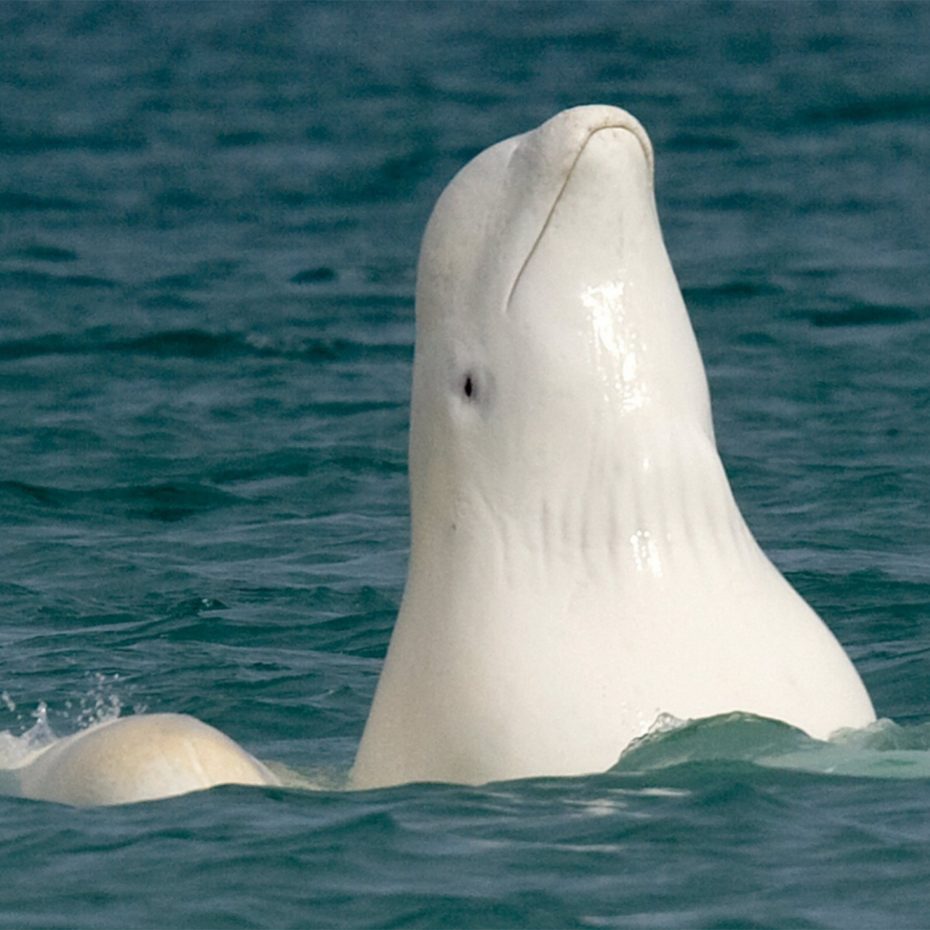BELUGA FACTS
Arctic Watch

Arctic Watch
July 05, 2018 | Arctic Watch
Arctic Watch is home to one of the world’s largest beluga nurseries and offers world class beluga viewing. From the shores of the Cunningham River, guests can observe beluga whales swimming just meters away.
Just a fifteen-minute walk from lodge at Arctic Watch, belugas congregate in the mouth of the Cunningham River. Their numbers reaching into the thousands during the peak of the summer, they pack into the turquoise waters of the sheltered bay. Splashing and gurgling they rub themselves on the river stones and the flurry of activity is felt even from the waters edge. From only a few feet away, guests can photograph beluga whales up close as they rub themselves and play in the freshwater as it spills into the Arctic Ocean.
For those interested in belugas or are prepping for a trip to Arctic Watch these quick facts will get your imagination running.

1. Cunningham Inlet is one of the largest beluga nurseries on earth. The long peninsula stretching into the bay from Gifford point provides protection from one the the belugas main predator, the orca. For decades, this particular location was chosen by scientists as the site of beluga research. Before the days of Arctic Watch, a scientist cabin was built on the hillside adjacent to the mouth of the Cunningham river and was actively used for 29 years to study the belugas each summer.
2. The belugas arrive at Arctic Watch in mid-July. Pausing in the open water of the Northwest Passage, they wait for the ice in Cunningham Inlet to break up before entering the bay. Like all mammals, belugas have lungs and are required to surface for air. As winter approaches again, they leave the bay to avoid being trapped by the ice. For five weeks the belugas enjoy the ‘warm’ temperatures of Cunningham Inlet, socialize and raise their young before retuning south to Baffin Bay.
3. Belugas are adapted to the Arctic environment and can be found moving along the coastal waters of northern Canada, Alaska and Russia. Belugas will enter large river systems such as the Gulf of St. Lawrence and it is not unusual to see them many kilometers from the ocean.
4. The skull of a Beluga whale reveals a large auditory cortex which provides a well-developed sense of hearing. Using echolocation to identify food and other objects, the belugas sonar ranges vastly exceed that of a human. And despite having no vocal chords, belugas make a vast array of sounds including chirps, grunts and whistles using a nasal sac near their blowhole.
5. Beluga whales are born gray and as they age they gradually turn white, reaching maturity around 8-10 years old. Every summer, they shed their skin and the stony riverbed of Cunningham Inlet is a great spot to watch as they rub and roll in the shallow water.

We understand that booking a trip like this is a big endeavour. Please reach out to us with any questions that you might have regarding your upcoming adventure.